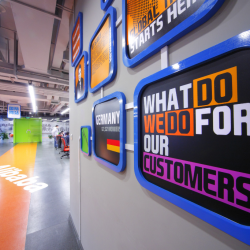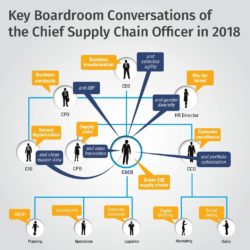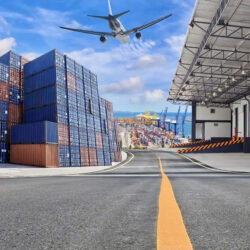Mourad Tamoud, Schneider: “The entire supply chain on renewable energy by 2025”

The immense rate at which technology and innovation accelerates leaves many in supply chain breathless. As executive vice president for global supply chain operations of Schneider Electric, Mourad Tamoud aims to keep pace by implementing a tailored, sustainable and connected 4.0 supply chain. The network includes 98 distribution centres, 207 factories, 24,000 supplier partners and 86,000 people in supply chain alone. The 24 billion euro global company is at the leading edge of energy management and automation for industries such as oil and gas; (waste) water; mining, metals & minerals; and food. Schneider Electric also works with web giants, real estate developers and commercial buildings facilitating smart buildings and energy efficient, sustainable solutions.
The company’s own offices and factories are also becoming a showpiece for customers who not only want to see products but also want to witness how Schneider itself innovates to manage energy, collect data and bring visibility throughout its entire system. “This is very new for the Schneider supply chain”, says Mourad, who is based in Hong Kong. He has been in this role for two years and spends 80% of his time visiting sites around the world.
What is your responsibility regarding the supply chain?
“I am responsible for the company’s entire supply chain including its distribution centres and factories to make sure we handle all customer orders made by our sales teams and execute the delivery. It is supported by three pillars. Firstly, the operational arm comprising seven regions: North America; South America; EMEA & India; Southeast Asia; Pacific & Australasia; China. This is very close to and connected to the market. Secondly, we have the business units that develop and define new product offers. Within these units we embark on supply chain innovation to drive the industrialization of new offers. The third pillar is global functions covering quality, customer satisfaction, planning, logistics, procurement, safety and environment and human resources. I spend about 80% of my time traveling across the organisation to meet the teams in different countries, to convey our business strategy & messages and understand how things are working there.”
What is the strategy of the Company (or Division/Supply Chain): Operational Excellence, Product Leadership or Customer Intimacy?
“To be the partner of choice when it comes to energy management and energy efficiency. This includes both the energy supply as well as the entire operation. Therefore we not only focus on the product, but also complete solutions through our fully integrated platform, EcoStruxure. This is a three-layer approach: connected products; visibility over operations; and apps that extract valuable information from the connected products. We see that our customers want speed and end-to-end visibility, so we are aligning our supply chain to connect with them, also through EcoStruxure. We are integrating new solutions such as the IoT and artificial intelligence as well as new technologies such as 3D printing, robots and automated guided vehicles in our offices, smart factories and distribution centres.
About five years ago we launched a tailored supply chain approach to ensure that the customer is centric; today this is embedded in everything we do. The aim was to reduce by half everything we do in supply chain, such as how we drive lead-time, and to provide better segmentation of customers, moving away from one size fits all. Last year we started the next step of our transformation journey, expanding it to Tailored, Sustainable and Connected. At its core is respect for the planet, environment and the people working within it. We are leveraging solutions such as renewable energy and our goal is to operate our entire supply chain on renewable energy by 2025.” … … …
Want to read more?
Subscribe on iPad or Android tablet to read the full version >>
or
Subscribe on print to receive the next issue >>
This article was first published in Supply Chain Movement 30 | Q3 – 2018










